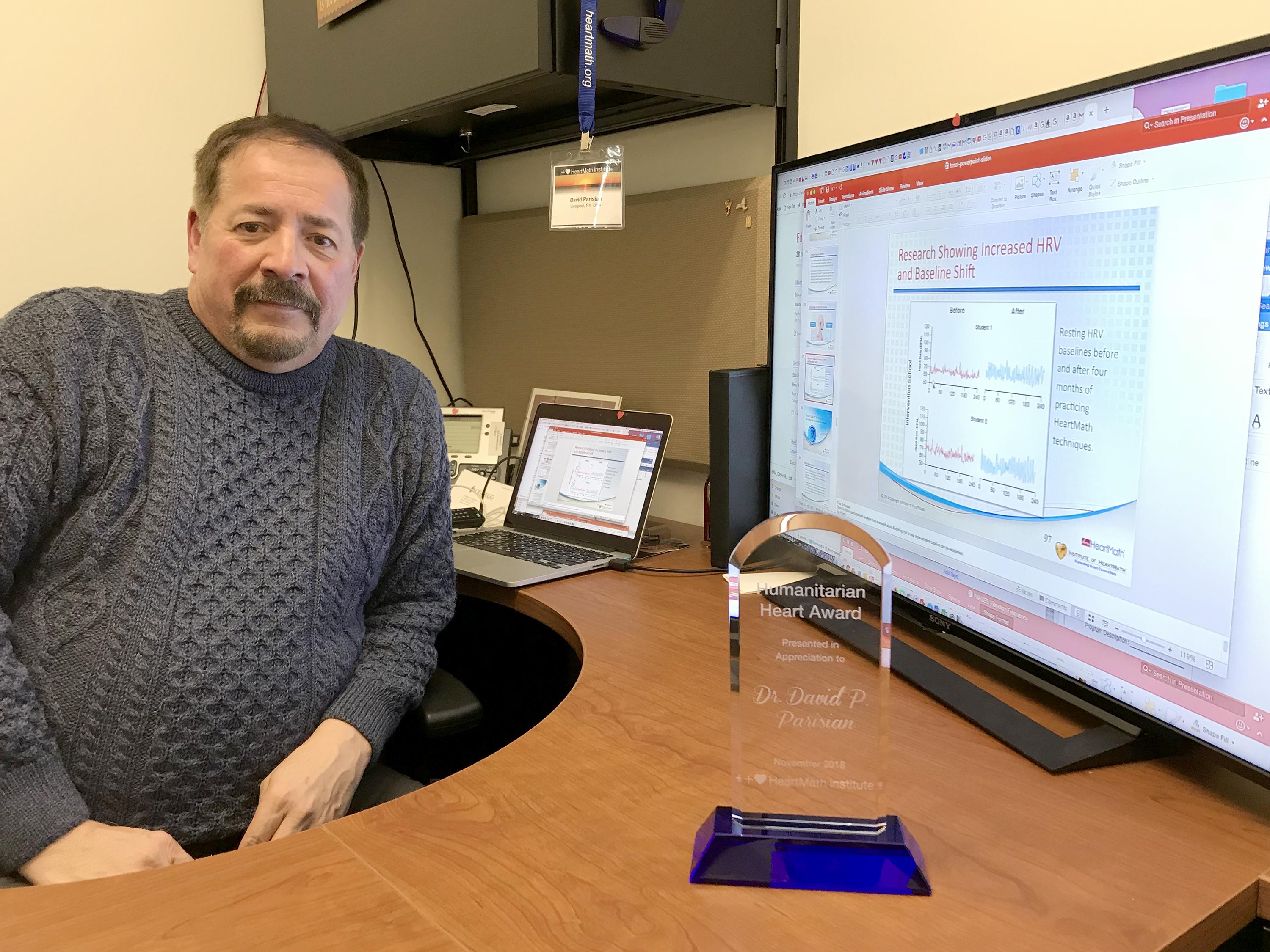David Parisian of SUNY Oswego’s curriculum and instruction department recently received the 2018 Humanitarian Heart Award from the HeartMath Institute. A visiting assistant professor in the School of Education after 30 years as a public school science teacher and administrator, Parisian was one of three individuals recognized by the organization, which conducts research on heart-brain communication and its relationship to managing stress. The awards recognize “energetic care and work toward the healing, enrichment and well-being of others,” the HeartMath Institute said. Read full story.
Dylan Richmond, a 2018 graduate in physics who also minored in computer science and astronomy, was first author on “Inkjet Printing All Inorganic Halide Perovskite Inks for Photovoltaic Applications” with another SUNY Oswego student, 2018 graduate Benjamin Swanson, and their research adviser and mentor, associate professor of physics Carolina Ilie. The paper is published in the peer-reviewed Journal of Visualized Experiments (JoVE). Other authors include Mason McCormick, Jacob D. Teeter and Alexander Sinitskii from University of Nebraska-Lincoln department of chemistry; Thilini K. Ekanayaka, Nicole Benker, Guanhua Hao, Andrew J. Yost and Peter Dowben from UNL’s department of physics and astronomy; Sharmin Sikich from Doane University’s department of chemistry; and Axel Enders from University of Bayreuth’s department of physics.
Jeremy Shifton of the criminal justice faculty published “How confession characteristics impact juror perceptions of evidence in criminal trials” in Behavioral Sciences and the Law, a Wiley journal. The article involved research building on existing literature by evaluating the impact of situational confession factors to determine whether jurors give weight to characteristics that are known to increase the likelihood of a false confession.
Jason Zenor, a communication studies faculty member and an authority on media law, recently had a paper published in Southwestern Law Review. "Tribal (De)Termination? Commercial Speech, Native American Imagery and Cultural Sovereignty" examines a recent U.S. Supreme Court case overturning the disparagement clause in trademark law and how it further impacts Native American tribes' ability to protect their cultural identity. The paper goes on to argue that commercial speech using tribal imagery should be protected through tenets of federal Indian law, commercial speech doctrine and intellectual property law.




